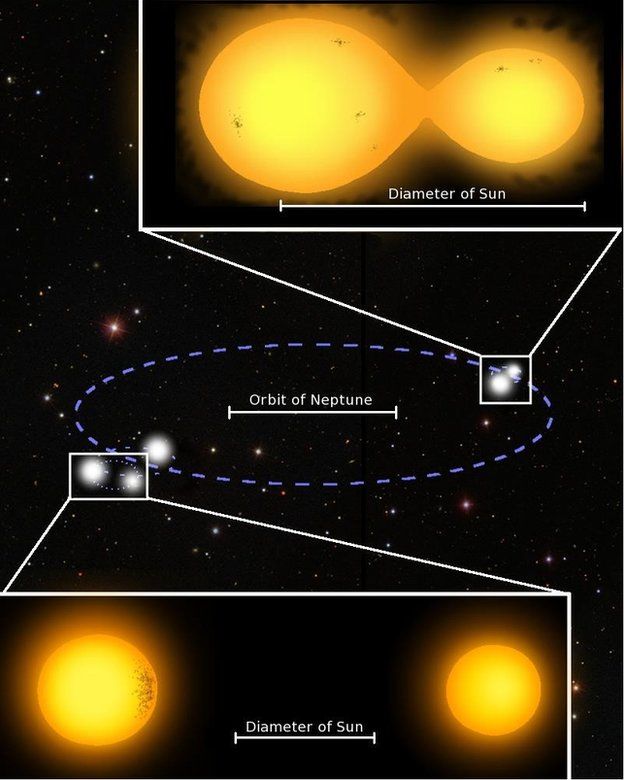A team of researchers has identified a unique system of stars made of two binary stars and a tag-along lone companion, according to work presented at the UK National Astronomy Meeting held this week in Llandudno, Wales.
The researchers made the discovery by using the SuperWASP (Wide Angle Search for Planets), a set of relatively low-cost cameras in the Canary Islands and South Africa that chart the brightness in different parts of the sky over a period of years. Stars that pass in front of one another create distinct double-dips in brightness, which enabled the researchers to make the discovery.
The five-star system is located 250 light-years away from Earth in the Ursa Major constellation. The stars all orbit on the same plane, indicating that they likely formed from the same proto-stellar disk of dust and gas. One pair of stars orbits so close together that it is called a contact binary, the BBC reports, and they may even share an atmosphere. The stars in the other binary are separated by almost 2 billion miles. Thirteen billion miles separate the two pairs of stars—a distance of more than four times the diameter of Neptune’s orbit. After discovering the two binaries, the researchers detected some additional wavelengths of light that they couldn’t account for, which led them to discover the fifth, lone star in this complex system.

How the 1SWASP J093010.78+533859.5 system works
“There could sometimes be no fewer than five Suns of different brightnesses lighting up the landscape,” Markus Lohr, one of the researchers behind the work, told the BBC. “This is a truly exotic star system. In principle there’s no reason why it couldn’t have planets in orbit around each of the pairs of stars. Any inhabitants would have a sky that would put the makers of Star Wars to shame.”
Though this five-star system is unique, it’s not the first one to ever be discovered—Lohr adds that NASA’s Kepler telescope has previously discovered another five-star system.









